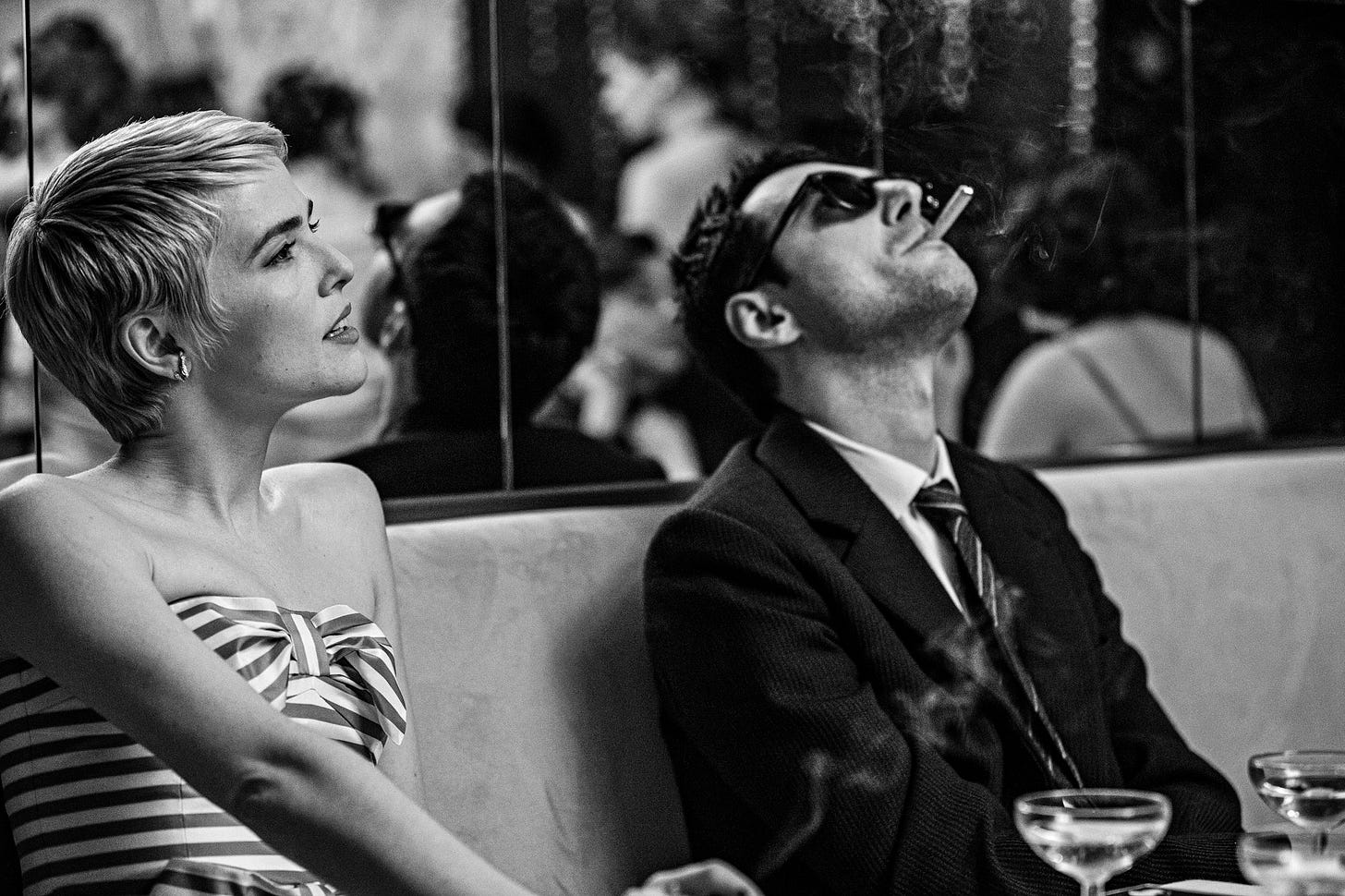Nouvelle Vague
2025
This year, Richard Linklater has given us two films that look behind the scenes of projects that forever altered their artistic media: Oklahoma! (as seen through Lorenz Hart’s eyes in Blue Moon) and Breathless (Jean-Luc Godard’s convention-shattering first film, portrayed in Nouvelle Vague).
Just as many attribute the birth of the modern musical theatre to Oklahoma!, Godard’s Breathless is seen as the moment when the French New Wave (literally, “Nouvelle Vague”) slammed into the staid and predictable cinema of the forties and fifties, changing the rules of the film game. Nouvelle Vague tells the chaotic 1959 birthing story of one of the most famous films in history, when film critic Godard decided to pioneer a theory-forward style of film, directing (or anti-directing) his way to infamy for himself and eternal icon status for his actors, Jean-Paul Belmondo and Jean Seberg.
Zoey Deutch, in the role of Seberg, is the only actor I recognized, but the film is stuffed full of names I know too well. The entire Nouvelle Vague strolls through this movie, all cast with convincing physical likeness to the real filmmakers of that time: Agnès Varda, Alain Resnais, Claude Chabrol, François Truffaut, Suzanne Shiffman, Jacques Rivette, Éric Rohmer, Juliette Greco, Jean-Pierre Melville, Jean Cocteau, Robert Bresson, and even Italian neorealist Roberto Rossellini.
But this is more than a film geek cosplay party. The main trio—Seberg, Belmondo (Aubry Dullin), and Godard (Guillaume Marbeck)—make a lovely center to this ever-rotating group. (Yes, this is another Linklater “hang movie” in many ways.) Marbeck is superb as the Godard of every cineaste’s dreams: high-strung and laissez-faire at the same time, endlessly spouting pretentious quotes, and randomly calling off shooting to play pinball. Dullin has Belmondo’s easy physicality and smirking insouciance. Deutch, as the only American character and actor, is always one second away from jumping a flight back to Hollywood, as she mocks Godard’s impish self-importance even while forming a loose and jocular relationship with her director and costar.
Jean-Luc Godard is a divisive figure in film history. (I personally have no patience for him most of the time.) Breathless is a film that has a steadier reputation than its director, but it’s still an inconsistent muddle of repeating patterns and jump-cuts. (I rewatched it immediately after seeing Nouvelle Vague, and it’s unaccountable how slipshod it is.) Linklater’s film peels back the layers to examine how this weird little non-noir became the DIY blueprint that launched a thousand scripts. He neither spares nor glorifies Godard, presenting him as a puzzle of anti-authoritarian cheek. It’s a lot of fun to watch this Godard run roughshod over the process of making art.
The numerous recreated shots from Breathless are pitch-perfect, capturing every detail of a movie that film geeks have studied in excruciating minutiae. Somehow, the pauses are correct and the body movements match while still capturing the on-the-fly style of the film’s production. These actors perform precise mimicry while appearing to be improvising off the cuff.
Film lovers are guaranteed to have a blast watching this cast and crew portray that earlier cast and crew so knowingly. I think anyone willing to jump into the flow of the film will enjoy it, however. The prevailing atmosphere is of artists at play but never quite at peace. It’s an infectious mood that makes Nouvelle Vague twice the movie Breathless is (in my book). See it now on Netflix.



